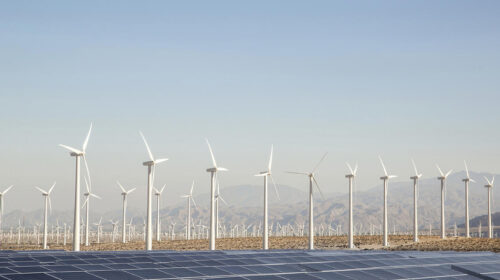The recently announced World Economic Forum’s Energy Transition Index 2021 has ranked Denmark, Finland and the United Kingdom among the top 10 countries that are well on their way to transition from fossil-based energy mix of oil, natural gas and coal to renewable energy sources like wind, biogas, biomass, solar and renewable battery technology.
The 50 top-ranking nations in this category are mostly European countries. In the process many of these nations have already reached the mark to provide their consumers a reliable, environment-friendly and cost-effective source of energy while the other nations in the category are well on their way. They have exploited all available resources to generate energy — be it garbage, storm water, whatever little sunshine they have, wind, waves and other available sources. The quest for identifying newer resources and the technology in the sector continues.
Ironically, of the 115 nations that have been ranked by WEF, Pakistan is ranked 104th. This is so in spite of the fact that the country is blessed with abundance of sunshine, heaps of garbage, water resources to generate energy from run of the river and mega hydropower plants and corridors to harness wind energy. But, in spite of the immense potential, the country currently only produces a meagre 1.16% of its electricity through solar, whereas 64% is still from fossil fuels as per available data of 30 Apr-2021.
For a comparable comparison, if one looks in the region, India is world’s 3rd largest consumer of electricity and world’s 3rd largest renewable energy producer with 38% (136 GW out of 373 GW) of total installed energy capacity in 2020 from renewable sources. Ernst & Young’s (EY) 2021 Renewable Energy Country Attractiveness Index (RECAI) has ranked India 3rd behind the USA and China.
Alternate Energy Development Board (AEDB) of Pakistan was established in 2020 with the mandate to reduce government dependence on fossil fuel and its gradual replacement with renewable energy. The delivery of AEDB has been pathetic and its present status is virtually of a non-existent entity.
The focus of successive governments, in all these years, has been on thermal power with an influx of all sorts of Independent Power Producers (IPPs) based on oil and lately on coal and LNG. As a consequence, today, Pakistan produces the most expensive electricity in the region, if not in the world.
The industry, therefore, finds it extremely difficult to afford its cost. Moreover, there exists a circular debt of Rs 2.3 trillion, which is denting nation’s fragile economy. Whereas, development in renewable energy remains depressing. In short, country’s energy sector is still in a terrible mess while the energy planners are clueless.
Some industrial and residential consumers have invested in solar systems on their premises as complimentary to national supply under the net metering policy of the government. Nations which have excelled in transition to renewable energy incentivised the private sector to step in and they did. As a consequence, businesspeople invested, earned a healthy return on investment and provided the consumers quality electricity with affordable tariffs in a deregulated market driven by quality of service and offered tariffs.
It is important to note that neither Private Power Infrastructure Board (PPIB) nor National Electric Power Regulatory Authority (Nepra) has truly incentivised the private sector to venture into the sector. Successive governments have aimlessly doled out billions of rupees in the shape of gas and power to textile and export industry in particular. Unfortunately, however, they have failed to come up with a realistic financial plan aimed at incentivizing potential investors in renewable energy.





